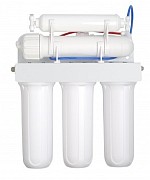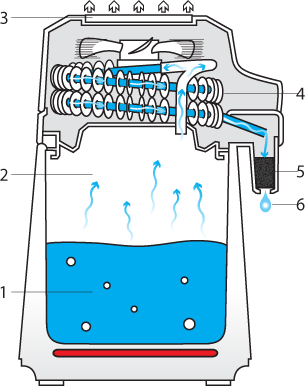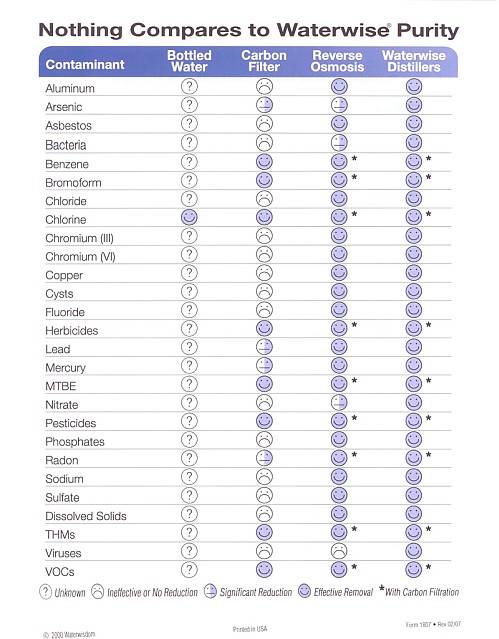Reverse Osmosis Water System
What is a Reverse Osmosis Water System?
|
 |
Many people have heard the name reverse osmosis water system and they may know that it is a series of filters, but most people do not understand exactly how it works and what is required in keeping it working effectively.
It is a series of filters that water travels through under normal household pressure, impurities are filtered out as it travels through each filter and waste is sent down the sewer pipe. It takes about 4 to 6 gallons to make 1 gallon of drinking water, so there is a lot of waste generated with a reverse osmosis drinking water system.
Installation
A reverse osmosis water system is usually installed under the kitchen sink and requires a plumber or someone knowledgeable in plumbing to install. It must be easily accessible as the pre and post filters must be replaced on a regular basis.
There is also a 2 or 3 gallon pressure tank that stores the filtered water, this must also be cleaned on a regular basis, you could lose up to half the space in the cabinet under the sin.
Contaminants and Maintenance
A reverse osmosis water system will effectively remove most contaminants including heavy metals and improve the taste of the water. However it cannot remove completely some gases, nitrates, arsenic, bacteria and viruses, in fact bacteria can grow in area’s of the reverse osmosis system.
The pre and post filters will need to be replaced every one to three months along with their canisters cleaned and water seals checked. The pressure tank will need to be cleaned at the same time or every other filter change, depending on the quality of your tap water and how much drinking water you use.
This will be another household chore that must be done on schedule otherwise your drinking water quality will suffer and you will be drinking more polluted water than before you installed a reverse osmosis system.
See chart at bottom of page for a comparison of pollutants removed.
The Heart of the System
The heart of a reverse osmosis water system is the semi permeable membrane; the effectiveness of this membrane diminishes with each gallon of water filtered.
Depending on the quality of your water and how much you use you could be replacing the membrane every one to two years. It is a costly item to replace and should be discussed at the time you are considering purchasing a reverse osmosis drinking water system along with the costs of the pre and post filters.
Lets not forget the time and effort to maintain a reverse osmosis system it cannot be put off until next month it must be done on schedule. If you are a person who is good at doing chores on schedule then nothing to worry about if not you should consider very carefully a reverse osmosis system.
Consider a Steam-Distilled Water Machine
If a reverse osmosis system does not sound like it is for you then consider a steam-distilled water machine.
A basic machine costs less money with no installation and just plugs into an electrical outlet. Larger machines can be installed in a laundry room or closet close to kitchen and pumped to a spigot at the kitchen sink. This may or may not require a plumber.
Steam-Distilled water will remove 99% of all contaminants with no costly filter replacements, see chart below. Their is just one charcoal filter that fits into the neck of the water collection bottle and only needs to be replaced every two months. These charcoal filters are inexpensive a years supply costs less than $50.00.
As you can see a steam-distilled water machine is an excellent alternative to a reverse osmosis system.
For Information Go To:
See a complete list of:
|
For More Great Information Go To:
On this page you will find out what is distilled water, how to make and why it is the purest water you can put into your body.
Contact Us For More Information
Home<<Reverse Osmosis Water System<<Distilled Water


